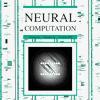I was pleased David Hubel was honoured by an obituary in The Telegraph, but I was surprised by the opening sentence: “When Hubel and Wiesel began experiments on vision and the brain in the late 1950s, neuroscientists thought that images from the retina were transmitted to visual centres in the brain, and projected onto the cerebral cortex in the same way as a photograph on to film.” Surely this underestimates 1950s neuroscience??
Category Archives: Uncategorized
New Stars for Old
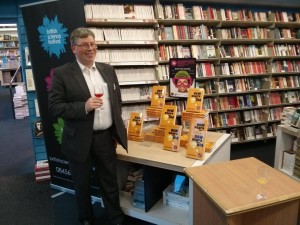 Anyone interested in the history of science in general and astronomy in particular can pick up a copy of my husband Marc’s book from the Newcastle branch of Blackwell’s on Percy Street. “New Stars for Old” is a series of linked short stories featuring characters from Aristotle to Newton, bringing to life the story of humanity’s attempt to understand the cosmos.
Anyone interested in the history of science in general and astronomy in particular can pick up a copy of my husband Marc’s book from the Newcastle branch of Blackwell’s on Percy Street. “New Stars for Old” is a series of linked short stories featuring characters from Aristotle to Newton, bringing to life the story of humanity’s attempt to understand the cosmos.
Welcome Vivek!
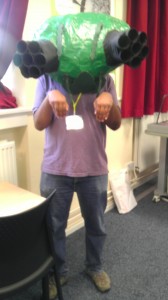
Delighted to say it was Vivek’s first day in the lab today. And he brought a delicious carrot cake along too! It was like the old days when Jennifer would bring along cake for lab meetings :).
Vivek wasted no time getting stuck in. He hasn’t even been given his computer log-in yet, but so far today he’s helped present a workshop on insects to local teens and worked with Ghaith on getting the mantids to strike at various visual stimuli. Oh, and he got transformed into a Kafkaesque man-insect hybrid. Not bad for one’s first day in a new job…
Day 2 of the British Science Festival
…and I am feeling I need a lie-down! All I did today was help present three 45-minute workshops to a total of nine groups of half a dozen kids. I realise this is nothing compared to the daily workload of a teacher, so all I can say to any teachers reading this is: Respect.
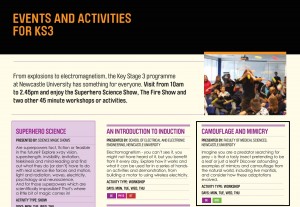
Today was the first day I had seen the workshop in operation, as I was tied up with a different event yesterday, and I was blown away by what a great event Lisa and Corry had organised (see inset image of the programme).
Everything ran very smoothly with expert presentation from Helen and Mandy, and the students (aged 11-14) seemed to really enjoy the different activities.
Corry had created an incredible giant sculpture of a praying mantis from translucent green acrylic. I don’t know what’s going on optically, but it really appears to glow with an inner light! Just incredible.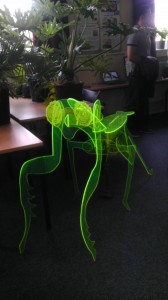
Lisa had made a papier-mache mantis head to demonstrate how insects see through compound eyes, which everyone enjoyed trying on.
We were all impressed by what a natural teacher Paul is: “Right! Front row is red group, you’re with Helen doing the experiment. Middle row, you’re blue group, you’re with me over here” – friendly but with a natural authority; great stuff.
Yesterday, I gave a short talk on 3D vision as part of a set of linked talks on perception (More than meets the eye, organised by Quoc Vuong and Debbie Riby). That seemed to go well, with engaged and perceptive questions from the audience. I also had a major grant submission deadline 30 minutes before my talk started, so that together with organising my contribution to the camouflage workshop made for a busy time. Thanks everyone for rallying round — I’ve been making a nuisance of myself texting various lab-members with pleas for help: “James can you go into town and get a 3D Blu-Ray”, “Paul can you pick up my poster on insect vision”, “Ghaith argh my camouflage-breaking stereo demo has broken, please fix it!” Thanks everyone for rallying round and keeping the various shows on the road.
Dissertation deadline looming
Over the past few weeks all my work has been focussed on one thing and one thing only: The looming deadline for my 7500 word dissertation on the research I have done over the past 7 months. I finally submitted it yesterday after a bit of back and forth between Jenny and myself with advice on what to chop and change and then after some formatting / binding issues (why double spaced? It uses unnecessary paper and looks worse!) submitted it both online via the NESS internal system and handed in two hard copies to the graduate school. This week I have also submitted an abstract to a conference in America (SMPTE) and have helped out with an outreach activity:
Some of the less well represented schools and colleges in the area brought their students to the university to give them a glimpse at university life to try and encourage them to go along. Because Newcastle doesn’t have a neuroscience undergraduate course the ION set up a stall/desk next to the boardroom where the talks were taking place after a talk on psychology – neuroscience PhD. Then any interested students came to talk to us about questions they had about life as a PhD student and what studying neuroscience was like and how to get into it. I thought I was well placed to talk to people about it because I’m actually mathematically backgrounded rather than psychology, biology or chemistry. Quite a number of students came to ask questions during the hour and I thought it was certainly a help to the students!
Now that the dissertation is submitted I am looking at submitting the work as a paper to a journal (hopefully Journal of Vision, or something similar) and working on another paper regarding the illusions at the Leicester conference I went to, as well as working on a presentation for the final aspect of my MRES year. The beginning of my PhD is nearly here and I’m very excited to get straight into it!
Satisfied.
What a productive lab… Lisa and Paul gave great talks as part of their MRes yesterday; today Lisa is delivering multiple talks to visiting sixth-formers as part of Biology Open Day, while Paul is up in Edinburgh on a Matlab course. Nick and Mike are working hard on their interim reports, due in tonight, while Parto is relieved to have finally got her visa renewal confirmed and is collecting control data with a lighter heart. James and I had a very useful meeting with colleagues this morning on taking the smartphone work further. Ghaith only started work with us on Wednesday and from what I see when I walk past his desk, is already making brilliant progress automating the video analysis. How fab to be part of such a talented and motivated team!
Data collection
This week I have been working very hard at data collection. Getting the cubes (which we managed to get correctly aligned last week) into a workable experiment program took some debugging but we got it sorted shortly after the Leicester conference. Since then 9 participants have come in to take part in the experiment and the data so far looks good. The conference in Leicester went very well. I was well received, the audience seemed engaged and asked questions and a coulpe of neuroscientists in the crowd caught up with me later to bash heads on ideas that I may/could use for my PhD. Jenny has asked me to start thinking about what it is that I wish to look at and I have a few ideas, most of them relating to comfort (and therefore discomfort) while watching 3D TV. The program on the laptop was a huge hit and everybody wanted to have a go!
My deadline for the dissertation and presentation/poster/abstract are beginning to get closer so the next few weeks I will be working on statistically analysing my data, organising my work and writing it up. I am presenting for the behaviour staff next Thursday and that will be my most pressing subject to handle over the weekend.
A week of debugging
This week has been a very varied and interesting one. I began by sorting out some acetate sheets for my perspex from which I could draw some stimulus, have them represented on the computer, and then check to see if my program was working as I intended it (see below pictures for examples of the pictures, lines and 3D cube used, I also used some random points to see if that also worked and eventually it did, not pictured). The immediate problem I could see was that the pictures were lining up perfectly fine when my angle of rotation was zero, but then if I rotated clockwise the images translated left and anticlockwise right. Because of this I realised that the centre of rotation I had organised (the centre of the television) was not in fact where the origin in my screenspace was. I adjusted the stand accordingly, by moving the television backwards, and it all worked perfectly.
After that I ran through the experiment myself for a full set of data and analysed the results, which show as I suspected that the slight translation made very little difference to the perception of the cube.
I am still working on getting the cubes working in openGL, which is becoming less painful the more I look at it, the cubes now warp and the backs can’t be seen when they shouldn’t. Still a work in progress, watch this space. The advantage I have is that the ‘extra parts’ such as turning it 3D, randomly interleaving many different variables and recording the results should be relatively straightforward as it can just be ported from phase 1.
I helped out at Kids Kabin again this week, (Ann the supervisor came to make up numbers and said my calling in life must eventually involve teaching, quite a nice compliment!) I have begun working on my dissertation with a bit more earnest (reading and re-reading appropriate papers, starting my introduction and materials and methods sections, etc.). I have also signed up to attend a conference on matlab in late June (only a week before my wedding) and have worked on my presentation at a conference in a fortnights time.
Next week I intend to continue with the openGL work, I am thinking of different ways I could present the problem in case what we are trying is physically impossible, possibly an adjustment task where the cube warps depending on the right or left keypresses, and the participant has to do it until they believe the cube is no longer warped, starting at different angles. Think that would be both feasible to program and quite interesting. Will see what Jenny thinks next week.
Makerspace
Dropped into the Newcastle Makerspace last night and had a friendly welcome. Definitely need to start going to that and getting creative in a geeky way.
A frustrating week
This week I have been working with the problem of trying to add some solidity to my wire frame cubes via putting surfaces on them. Which sounds fairly trivial but has taken me the best part of a week to sort out. Needed to use Screen(FillPoly,…) and enter the coordinates my sph2cart(theta, phi, fancy R) returned. But this in itself raises a problem. Due to the 3D being used and the entire thing being on one plane when it is done, filling raises more problems then it solves, and the back surface can be seen on the wrong size (PTB does nothing for hidden faces, or at least not automatically)
SO it looks like I may have to write a new piece of code, using openGL. Which I would prefer to avoid as it’s a different beast altogether and will take a while. Going to look today at what I hope will be half measures to see if I can find a workaround in PTB. Not too hopeful though!
In other news I have received and setup the active stereo on my laptop. Have to say it looks brilliant and the screen quality is super HD anyway. So have been working with that and seeing if I can adapt matlab so it work in active stereo (managed it for basic matlab codes, not yet for my script). The number of volunteers I am getting from ION database is brilliant and I now have more than enough to do phase 1 and 2. Reluctant to turn any of them away in case I do need more for the power of the stats used. I have also been working on the abstract and presentation for the illusion conference in Leicester in June (excited for that).
Here are a couple of photos of the lab setup for this experiment and what the participant can see through the screen. As is clear, the curtain makes the orientation of the screen plane appear frontoparallel (perpendicular) whereas the other pictures show it is not!




